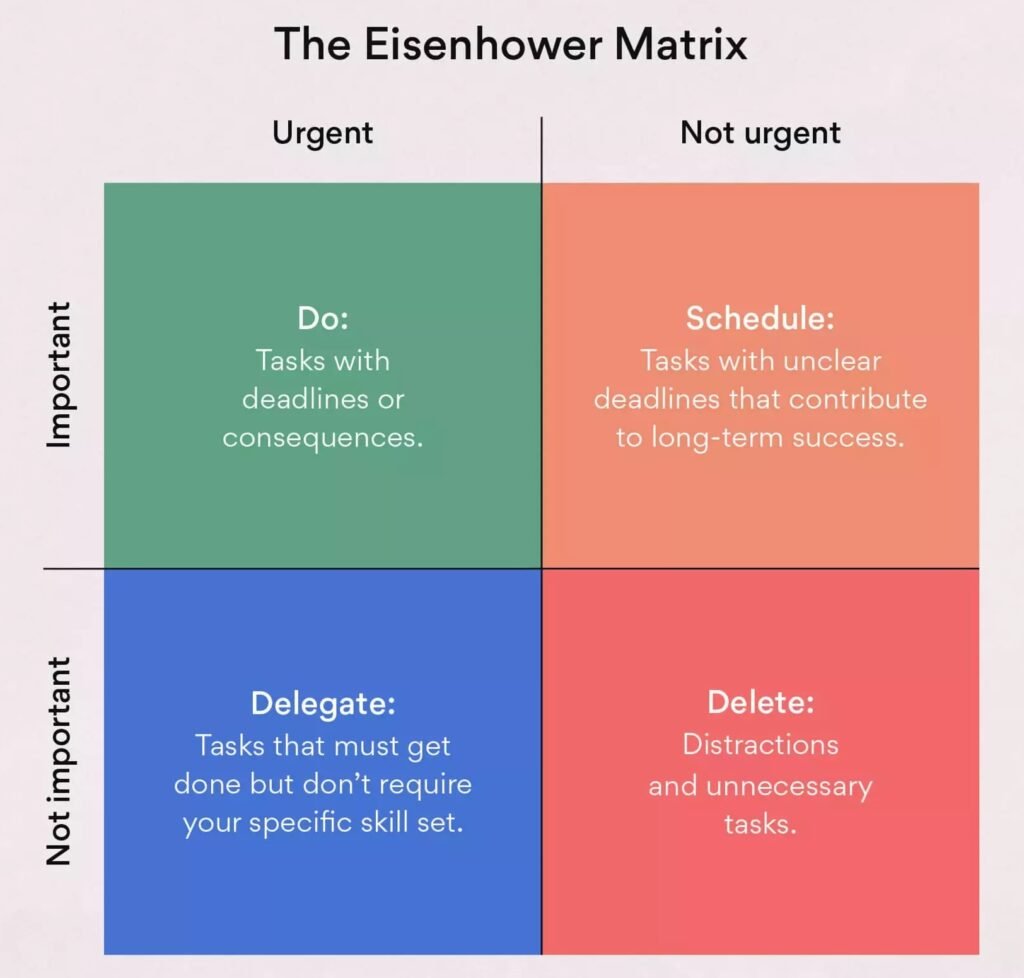
Life is all about learning and this, I have learnt from one of my bosses. In the bustling environment of modern workplaces, where deadlines loom large and tasks pile up, the ability to prioritize effectively can be the linchpin of productivity and success. Prioritizing your work not only helps manage stress but also ensures that you meet important deadlines and contribute to your team and organization’s goals. Here’s a comprehensive ten-point strategy to help you master the art of prioritization at your workplace.
1. Understand the Big Picture
Begin by understanding your organization’s goals, your team’s objectives, and how your work aligns with these aims. Recognizing the bigger picture allows you to see where your efforts should be directed and what impact your work has on the overall success of the business. This understanding will guide you in making informed decisions about what tasks deserve your immediate attention.
2. Make Lists and Use Tools
Creating a to-do list is a fundamental step in prioritizing your work. However, to elevate this basic tool, consider using digital apps and project management tools like Trello, Asana, or Notion. These platforms allow you to organize tasks, set deadlines, and categorize them based on priority and project. They also facilitate collaboration with team members, providing a clear view of everyone’s responsibilities and progress.
3. Apply the Eisenhower Matrix
The Eisenhower Matrix is a powerful tool for prioritizing tasks based on their urgency and importance. It divides tasks into four quadrants: urgent and important, important but not urgent, urgent but not important, and neither urgent nor important. This method helps you focus on tasks that contribute significantly to your goals while managing or delegating less critical activities.

4. Set Clear Deadlines
Assigning deadlines to tasks, even those that don’t have a fixed due date, can help you manage your time effectively. Deadlines create a sense of urgency and serve as a reminder of the tasks that need immediate attention. Be realistic when setting deadlines to avoid unnecessary stress and ensure that you allocate enough time to complete each task to the best of your ability.
5. Learn to Say No
One of the most critical skills in prioritizing work is learning to say no to tasks that do not align with your primary objectives or exceed your capacity. Taking on too much can lead to burnout and reduce the quality of your work. Politely declining additional responsibilities or negotiating deadlines can help you maintain focus on your priorities.
6. Delegate When Possible
Delegation is not a sign of weakness but a strategic move to ensure that tasks are completed efficiently. If there are tasks that others can do better or faster, delegate them. This frees up your time for tasks that require your specific skills and expertise. Ensure clear communication when delegating to avoid confusion and ensure that the task is completed as expected.
7. Tackle High-Priority Tasks First
Start your day by focusing on high-priority tasks. This approach, often referred to as “eating the frog,” ensures that you tackle the most challenging or important tasks when your energy levels are highest. Completing these tasks early can provide a sense of accomplishment and motivate you to tackle less critical tasks.
8. Minimize Distractions
Distractions are one of the biggest threats to productivity. Identify what typically distracts you in your work environment and take proactive steps to minimize these interruptions. This might involve setting specific times to check emails, using noise-canceling headphones, or organizing your workspace to reduce clutter.
9. Regularly Review and Adjust Your Priorities
Priorities can change due to new information, unforeseen circumstances, or shifts in organizational goals. Make it a habit to regularly review and adjust your priorities accordingly. This ensures that you remain flexible and responsive to changes, keeping your work aligned with the most current objectives.
10. Take Care of Your Well-being
Lastly, remember that your ability to prioritize and be productive is closely linked to your well-being. Ensure that you take regular breaks, maintain a healthy work-life balance, and engage in activities that reduce stress. A well-rested and healthy mind is more capable of making sound decisions and managing a heavy workload.
Conclusion
Mastering the art of prioritizing work is crucial in today’s fast-paced work environment. By understanding the bigger picture, using the right tools, applying effective strategies like the Eisenhower Matrix, and taking care of your well-being, you can enhance your productivity and contribute more significantly to your organization’s success. Remember, effective prioritization is not just about doing more in less time but about doing the right things that lead to meaningful outcomes. Embrace these strategies, and watch your work life transform, leading you to greater satisfaction and success.



